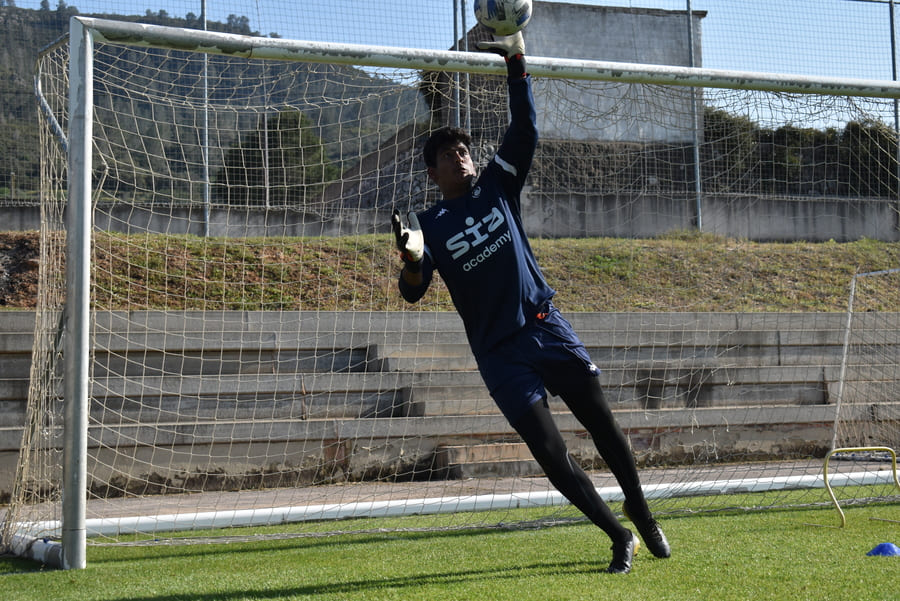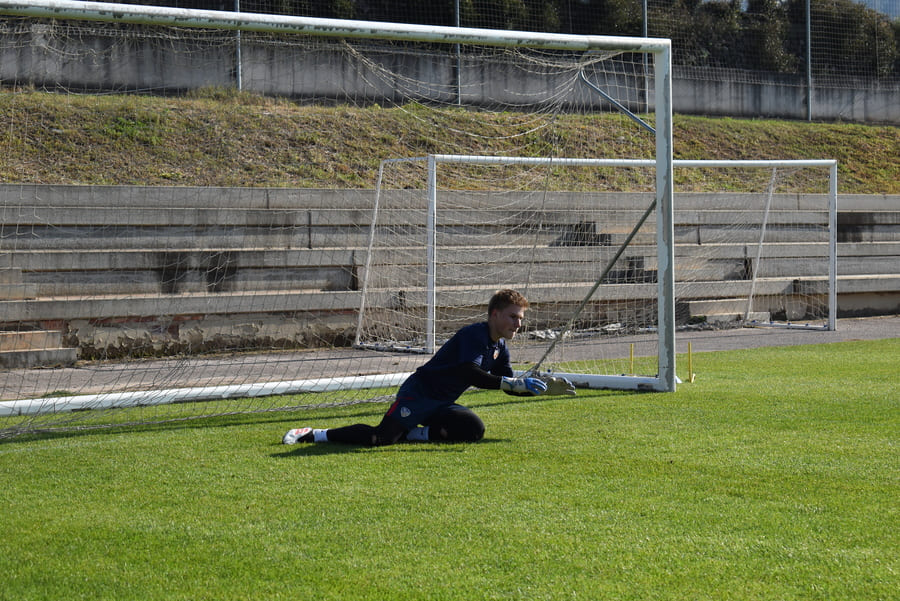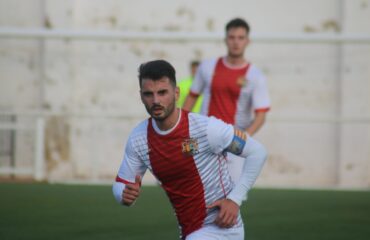In modern football, penalties are tense moments where a goalkeeper can become a hero or a villain in just seconds. Although much is often said about the taker’s talent, the truth is that the goalkeeper’s specific preparation is decisive. Mastering this skill does not depend only on intuition, but on structured and strategic training.
At SIA Academy, goalkeeper training includes a comprehensive focus on one-on-one situations and, of course, on penalty work. These sessions are designed based on sports science, observation of patterns, and the ability to react under pressure.
Below, we present an analysis with six key training strategies that every goalkeeper should apply to improve performance in penalty shootouts.
Table of contents
1. Study of penalties shooters’ patterns
The first strategy in penalties is to analyze possible opponents. Although videos or statistics are not always available, at many competitive levels this information can be accessed.
The goalkeeper must learn to recognize trends in shots, such as the opponent’s dominant foot, the most common direction, or how they position their body before striking. This study does not seek to guess the shot, but to increase the chances of correct anticipation.
At SIA Academy, audiovisual tools are used that allow goalkeepers to simulate real situations, so they arrive at the match with prior knowledge of the rival.

2. Training reflexes and reaction speed
Although anticipation is vital, a penalty always leaves a reduced margin of response. That is why reaction speed is an essential component in goalkeeper preparation.
Exercises include:
- Using balls of different sizes and colors to surprise the goalkeeper.
- Unexpected shots from close range.
- Routines with lights or visual stimuli that force immediate reaction.
With this training, the goalkeeper develops a greater ability to respond in milliseconds, something decisive when the ball travels at over 100 km/h.
3. Specific physical strengthening
It’s not enough to dive well: goalkeepers need strength in the lower body, power in the core, and elasticity throughout the body to reach the farthest balls.
At SIA Academy sessions, specific routines are designed to improve explosiveness and endurance:
- Plyometric jumps to reinforce lateral movement.
- Core exercises to maintain stability when diving.
- Flexibility work to expand range of motion and prevent injuries.
The combination of these qualities allows the goalkeeper not only to reach the ball but to do so safely.
4. Development of competitive mentality
The psychological aspect is probably the most decisive in penalties. The goalkeeper who stays calm and transmits confidence has a psychological advantage over the taker.
Training mentality involves:
- Simulation of shootouts under pressure during training sessions.
- Breathing control techniques to reduce stress.
- Visualization of success before facing the penalty.
At SIA Academy, this component is worked on transversally, integrating sports psychology into the goalkeeper training program. The goal is for the goalkeeper to manage pressure and turn it into motivation.

5. Deception and positioning strategies
The goalkeeper does not only wait: they can also influence the taker. An effective strategy is the use of micro-gestures, such as small steps to one side or arm movements, to condition the shooter’s choice.
In addition, the initial positioning is crucial. Standing slightly forward or shifted can create the impression that one side of the goal is more open, leading the rival to choose a direction the goalkeeper is already prepared to cover.
These details are trained repeatedly until they become automatic and natural during the match.
6. Realistic simulation of shootouts
Finally, no strategy is effective if real match situations are not recreated. At SIA Academy training, penalty shootouts are practiced with players, referees, and simulated crowd noise to replicate match pressure as closely as possible.
This type of simulation teaches the goalkeeper to maintain focus after several consecutive shots, to recover energy quickly, and to manage the emotional toll of the shootout.
Penalties in football are a test of skill, preparation, and mental strength. For the goalkeeper, they represent the chance to become the absolute protagonist of the match. However, that role is not improvised: it is built with specific training strategies that combine analysis, physical condition, mentality, and intensive practice.
The methodology applied at SIA Academy shows that success in these situations is not a matter of luck, but of well-planned work. Through opponent study, reflex improvement, physical preparation, mental training, deception tactics, and realistic simulation, goalkeepers manage to increase their chances of stopping a penalty and making the difference for their team.
In short, training penalties not only strengthens the goalkeeper in this specific scenario but also enhances all the qualities necessary to be a complete goalkeeper, ready to perform at the highest level in any game situation.






